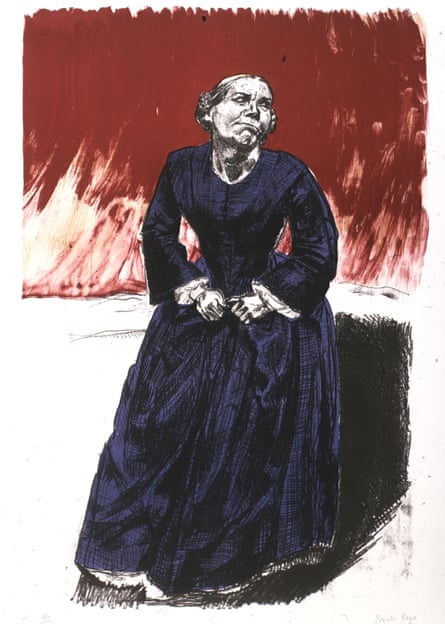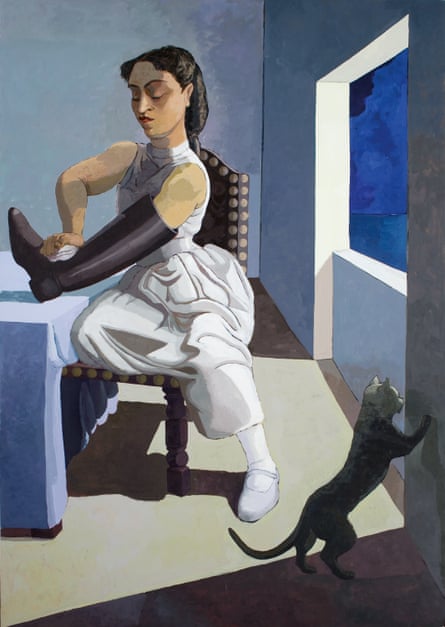I first met Paula Rego 20 years ago, interviewed her again as she turned 80 and had a final conversation, by email, in 2021, just before the Tate’s magnificent retrospective of her work; it was quite possibly the last interview she gave. Our first meeting – she would have been in her 60s – was in her studio in Kentish Town. She came across as a thriving Londoner and, at the same time, as unswervingly Portuguese.

Her studio was filled with outlandish creatures – a lifesize horse, a stuffed pelican, a battered toy monkey. And there were clothes on racks: a Victorian frock-coat, a tomato-coloured waistcoat, a taffeta dress. It was like being backstage – she was director, designer, wardrobe mistress all in one. I was thrilled by her imagination and by everything she had to say. She was about to exhibit her formidable paintings based on Charlotte Brontë’s Jane Eyre. I remember telling her how I marvelled at the way she had released Jane from the straitjacket of being an English governess and translated her into a Mediterranean figure in whom desire is grimly undisguised. Her Jane, I reflected out loud, was no mouse. At this, Rego, who had until this point been talking in a generous, modest, cooperatively responsive way, exploded: “I don’t believe in the existence of little mice! Every mouse has intestines and teeth and they are terrifying, those little mice. Jane Eyre is actually a bit of a rat, although noble and very proud.”
Throughout her career, Rego’s championing of women was faithful, fierce and complicated: she was no polemicist, yet her work – in particular, the 1998 sequence of 10 paintings on abortion – did more than any verbal demonstration could to help change Portuguese anti-abortion law. The championing was complicated because she did not turn her women into heroines, but explored their pain, sorrow, ardour – and faultiness. She continued to express her own feelings about being a woman too: several of her best paintings grew out of her marriage to the artist Victor Willing, who died tragically young of MS.

Rego was certainly no mouse herself, although one could say – she would not have minded – that there was a playful monkey in her (delinquent monkeys feature in wonderful paintings from the 80s). I can still see the mischief in her smile, the quarrelling teeth, the flash in her eyes – the sense of the inextinguishable child in the older woman. At 80, she told me: “I’m not brave in real life but I’m not frightened of doing anything in my work.”
I love her work because it does what the best paintings do: it raises questions that cannot be definitively answered. Looking through the Tate’s catalogue of last year’s retrospective, I am struck again by how seldom her subjects look back at you. There is a sense of trespass as you intrude on their reverie. This, in part, is what makes her work powerfully enigmatic and subversive. What is The Policeman’s Daughter (1987) thinking as she polishes her father’s boot? What does the woman dancing without a partner in the moonlight in her masterpiece, The Dance (1988), feel in her unsuitable walking shoes? And what, in The Family (1988), are we to make of the woman dressing a helpless man – roughest of nurses – her arm across his mouth as if stifling him, her own mouth fixed in an expression of unreliable pleasantness? The horizon she stares at we cannot see. Rego’s model and friend Lila Nunes, once the family au pair, appears repeatedly in these paintings – always and never the same.
A remarkable thing to emerge from the 2021 interview was that, even in the advanced fragility of old age, Rego continued to go to her Kentish Town studio every day to work. I am tempted to write: she was an inspiration. Yet I know she would have dismissed this, would have said work was necessary for survival and that painting was who she was. She told me, in our last conversation, that she painted to find out what she felt: there was no such thing as known quantities or foregone conclusions. The sadness on hearing of her death will be felt by everyone who met her, no matter how briefly, and by numberless admirers throughout the world, but her incomparable paintings will continue to keep us guessing: they will never be solved, never be in the past tense.

